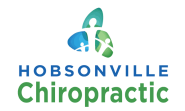What is it? How common is it?
Degenerative joint disease / osteoarthritis is a progressive condition where certain joints of the body begin to grow excess bone due to the stressors that have impacted that particular joint. This could be from a repetitive stress/ repetitive movement on that joint, or from one larger injury to it. Some people have a genetic predisposition to having osteoarthritis. Spinal degeneration can also be called degenerative disc disease or spondylosis.
1 in 7 adults of all ages have osteoarthritis. It commonly starts developing at age 45 and affects almost every individual in late adulthood.
The intervertebral disc, its purpose, and how things change when it degenerates?
Between each vertebra we have a fibrous disc which acts as a spinal shock absorber. These discs are very important for spinal function and spinal health. Different postures change the amount of pressure on these discs. The lowest amount of pressure is when you are lying in your back, an intermediate amount when standing, the highest pressure is when sitting, or if you are leaning forward. When these discs start to age and degenerate, they lose their shock absorbency resulting in a reduction of movement for your spine.
What are the symptoms? How do I know I have osteoarthritis?
Some people have pain associated with osteoarthritis, some have stiffness, and some show no symptoms. The presenting symptoms are often worse in the morning or in the cold. So, using warmth such as a cayenne cream or wheat bag can be beneficial.
Osteoarthritis is diagnosed via an X-Ray of the affected joint. Sometimes it can be found accidentally by getting the X-Ray for another reason.
Why you shouldn’t fear an osteoarthritis diagnosis:
It is common and often expected after an old injury, repetitive stress, in fact most individuals in late adulthood will have osteoarthritis.
What can I do about it?
- Get chiropractic checks. Studies have shown that chiropractic care can help reduce pain from osteoarthritis and increase range of motion of the affected area. If you get an X-Ray through one of our chiropractors, we will explain in depth what is happening in your spine and how we can help.
- Eat healthy. Implement an anti-inflammatory diet.
- Exercise gently. It’s hard to start a habit of exercising but you start with small walks and build yourself up. Avoid high intensity exercises (if both of your feet are coming off the ground at the same time this is likely to be high intensity exercise).
- Use wheat bags and / or hot creams such as cayenne cream.
- Glucosamine and chondroitin supplements.
Any advice given by your GP or chiropractor should be listened to over this article.
Check out https://www.arthritis.org.nz/ for more information regarding osteoarthritis.
References:
Ambrose, K. (2023, February 17). Why Older Adults Shouldn’t Ignore an Osteoarthritis Diagnosis. The National Council on Aging. https://www.ncoa.org/article/why-older-adults-shouldnt-ignore-an-osteoarthritis-diagnosis
Arthritis Foundation. 2020. Arthritis by the Numbers. Found on the internet at https://www.arthritis.org/getmedia/73a9f02d-7f91-4084-91c3-0ed0b11c5814/abtn-2020-final.pdf
Beyerman, K. L., Palmerino, M. B., Zohn, L. E., Kane, G. M., & Foster, K. A. (2006). Efficacy of treating low back pain and dysfunction secondary to osteoarthritis: chiropractic care compared with moist heat alone. Journal of manipulative and physiological therapeutics, 29(2), 107-114. https://www.sciencedirect.com/science/article/abs/pii/S0161475405003684
Ernest B. Hawkins, MS, BSPharm, RPh, Health Education Resources; and Steven D. Ehrlich, NMD, private practice specializing in complementary and alternative medicine, Phoenix, AZ. Review provided by VeriMed Healthcare Network. https://chiro.org/Conditions/Chiropractic_And_Osteoarthritis.html
Gottlieb, M. S. (1997). Conservative management of spinal osteoarthritis with glucosamine sulfate and chiropractic treatment. Journal of manipulative and physiological therapeutics, 20(6), 400-414. https://europepmc.org/article/med/9272473
Skalski M, Knipe H, Rodríguez G, et al. Degenerated disc. Reference article, Radiopaedia.org (Accessed on 02 Jun 2023) https://doi.org/10.53347/rID-42153
Vad, V., MD. (n.d.). What Are Anti-Inflammatory Foods? Arthritis-health. https://www.arthritis-health.com/treatment/diet-and-nutrition/what-are-anti-inflammatory-foods#:~:text=The%20goal%20of%20an%20anti,help%20to%20reduce%20uneccessary%20inflammation
Weerakkody Y, Zhang R, Chieng R, et al. Spondylosis. Reference article, Radiopaedia.org (Accessed on 02 Jun 2023) https://doi.org/10.53347/rID-57644
